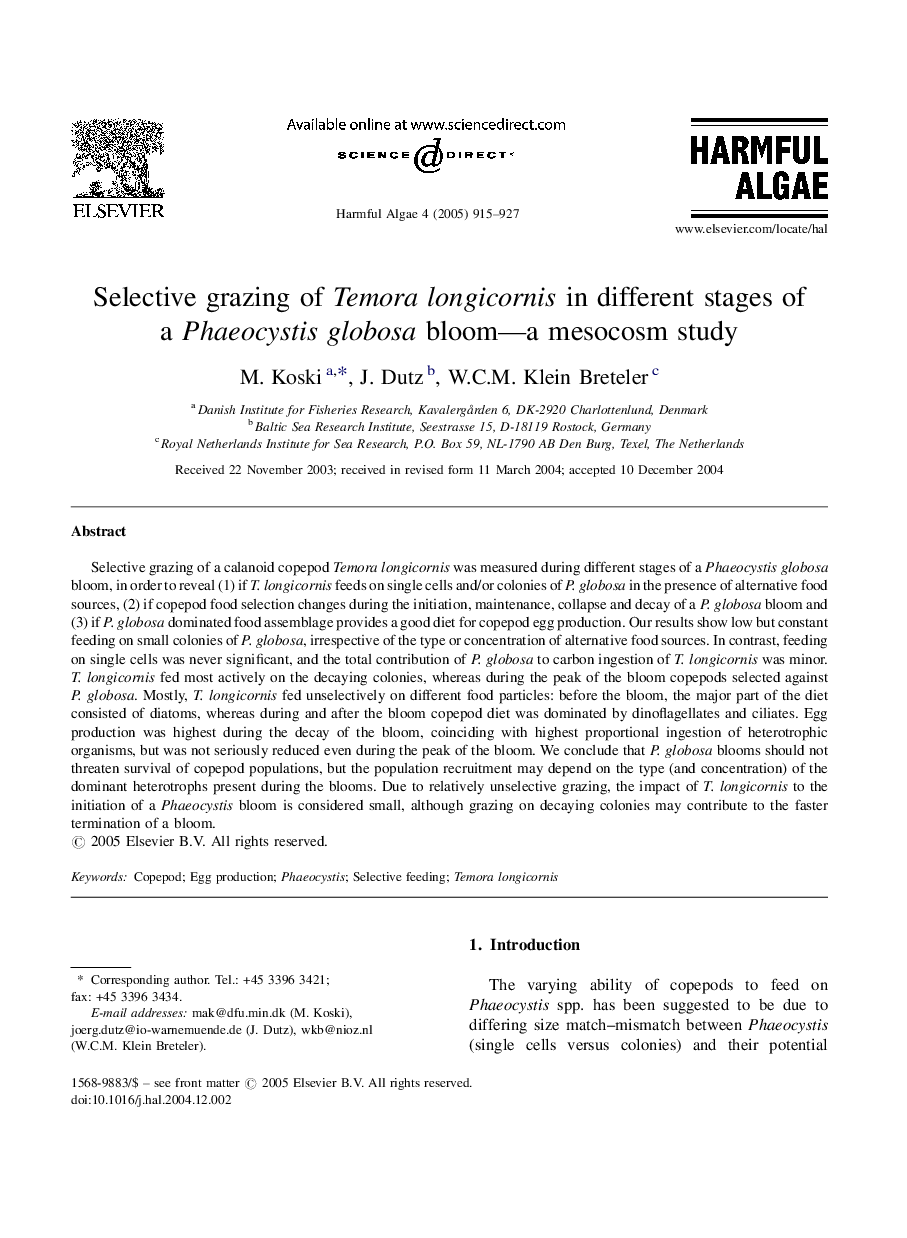| Article ID | Journal | Published Year | Pages | File Type |
|---|---|---|---|---|
| 9482576 | Harmful Algae | 2005 | 13 Pages |
Abstract
Selective grazing of a calanoid copepod Temora longicornis was measured during different stages of a Phaeocystis globosa bloom, in order to reveal (1) if T. longicornis feeds on single cells and/or colonies of P. globosa in the presence of alternative food sources, (2) if copepod food selection changes during the initiation, maintenance, collapse and decay of a P. globosa bloom and (3) if P. globosa dominated food assemblage provides a good diet for copepod egg production. Our results show low but constant feeding on small colonies of P. globosa, irrespective of the type or concentration of alternative food sources. In contrast, feeding on single cells was never significant, and the total contribution of P. globosa to carbon ingestion of T. longicornis was minor. T. longicornis fed most actively on the decaying colonies, whereas during the peak of the bloom copepods selected against P. globosa. Mostly, T. longicornis fed unselectively on different food particles: before the bloom, the major part of the diet consisted of diatoms, whereas during and after the bloom copepod diet was dominated by dinoflagellates and ciliates. Egg production was highest during the decay of the bloom, coinciding with highest proportional ingestion of heterotrophic organisms, but was not seriously reduced even during the peak of the bloom. We conclude that P. globosa blooms should not threaten survival of copepod populations, but the population recruitment may depend on the type (and concentration) of the dominant heterotrophs present during the blooms. Due to relatively unselective grazing, the impact of T. longicornis to the initiation of a Phaeocystis bloom is considered small, although grazing on decaying colonies may contribute to the faster termination of a bloom.
Related Topics
Life Sciences
Agricultural and Biological Sciences
Aquatic Science
Authors
M. Koski, J. Dutz, W.C.M. Klein Breteler,
